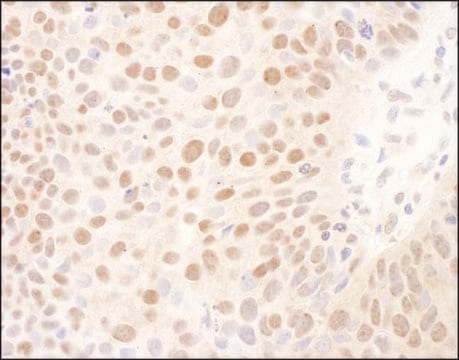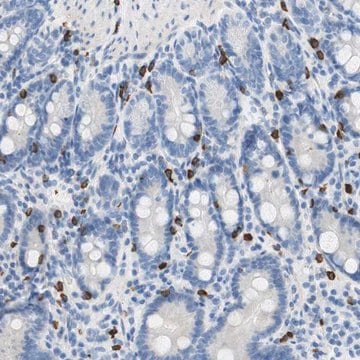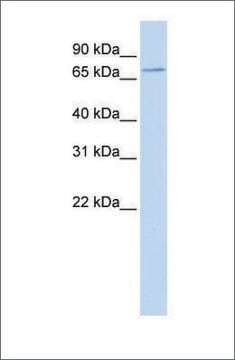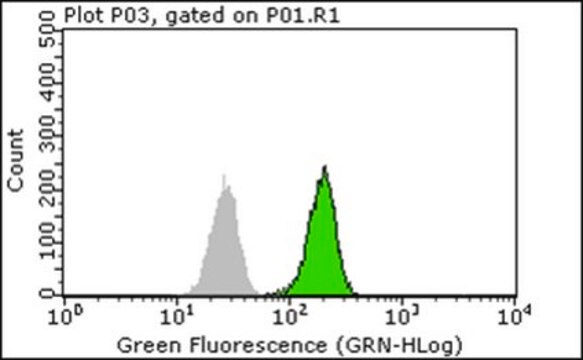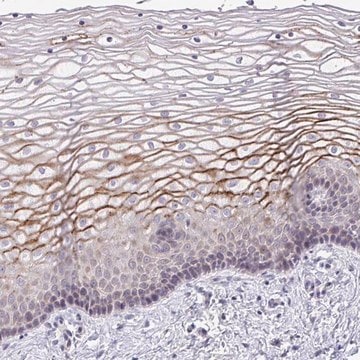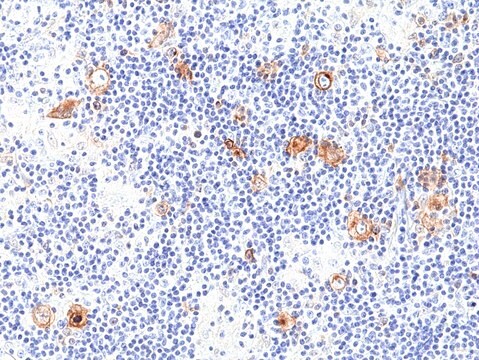SAB4200034
Anti-BMI1 (C-terminal) antibody produced in rabbit
~1.0 mg/mL, affinity isolated antibody, buffered aqueous glycerol solution
동의어(들):
Anti-B lymphoma Mo-MLV insertion region 1 homolog, Anti-PCGF4, Anti-Polycomb group RING finger protein 4, Anti-RNF51, Anti-Ring finger protein 51
About This Item
추천 제품
생물학적 소스
rabbit
결합
unconjugated
항체 형태
affinity isolated antibody
항체 생산 유형
primary antibodies
클론
polyclonal
형태
buffered aqueous glycerol solution
분자량
antigen ~37 kDa
종 반응성
human
포장
antibody small pack of 25 μL
농도
~1.0 mg/mL
기술
immunoprecipitation (IP): 2.5-5 μg using lysates of HEK-293T cells over expressing human BMI1
indirect immunofluorescence: 1-2 μg/mL using paraformaldehyde fixed HEK-293T cells over expressing human BMI1
western blot: 2-4 μg/mL using lysates of HEK-293T cells over expressing human BMI1
UniProt 수납 번호
배송 상태
dry ice
저장 온도
−20°C
타겟 번역 후 변형
unmodified
유전자 정보
human ... BMI1(648)
일반 설명
애플리케이션
- western blotting
- immunoprecipitation
- immunofluorescence
생화학적/생리학적 작용
물리적 형태
면책조항
Not finding the right product?
Try our 제품 선택기 도구.
Storage Class Code
10 - Combustible liquids
Flash Point (°F)
Not applicable
Flash Point (°C)
Not applicable
시험 성적서(COA)
제품의 로트/배치 번호를 입력하여 시험 성적서(COA)을 검색하십시오. 로트 및 배치 번호는 제품 라벨에 있는 ‘로트’ 또는 ‘배치’라는 용어 뒤에서 찾을 수 있습니다.
자사의 과학자팀은 생명 과학, 재료 과학, 화학 합성, 크로마토그래피, 분석 및 기타 많은 영역을 포함한 모든 과학 분야에 경험이 있습니다..
고객지원팀으로 연락바랍니다.